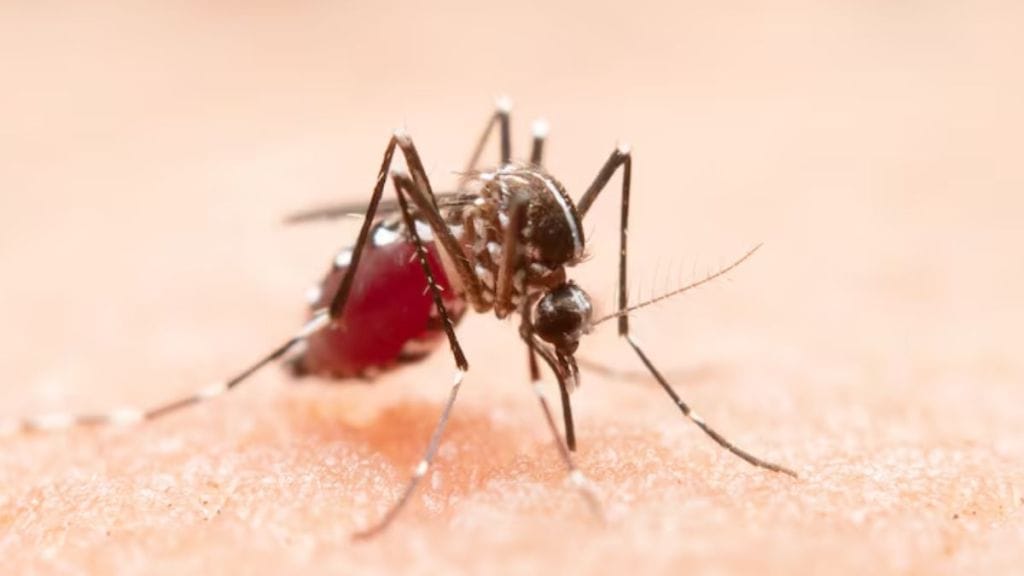The New York State Department of Health has confirmed the first locally acquired case of chikungunya in the United States since 2019. The case, reported in Nassau County on Long Island, marks the first locally transmitted infection of the virus in New York and the first in the US in over six years. The infected person is believed to have contracted the virus after being bitten by an infected mosquito.
What is Chikungunya?
Chikungunya is a mosquito-borne viral disease typically found in tropical and subtropical regions. The virus causes symptoms such as sudden fever, joint pain, muscle pain, headache, rash, and swelling. Most people recover within a week; some may experience persistent joint pain, which can last for months. Severe cases are rare, but the disease can be more dangerous for newborns, elderly individuals, and those with underlying health conditions such as diabetes or heart disease.
According to the World Health Organization (WHO), chikungunya causes fever and severe joint pain, which is often debilitating and may be prolonged; other symptoms include joint swelling, muscle pain, headache, nausea, fatigue, and rash.
How chikungunya spreads
The virus is spread by infected Aedes mosquitoes, primarily Aedes aegypti and Aedes albopictus, which are present in parts of downstate New York. Local transmission occurs when a mosquito bites an infected traveler, becomes infected itself, and then transmits the virus to another person through its bite.
Although there are no known cases of chikungunya found in New York mosquitoes through routine testing, health officials are closely monitoring the situation. The risk of widespread transmission in New York remains low, particularly given the colder nighttime temperatures that typically limit mosquito activity.
Symptoms to watch for
Symptoms of chikungunya usually begin 3–7 days after being bitten by an infected mosquito. The most common symptoms are fever and joint pain. Other symptoms can include headache, muscle pain, joint swelling, or rash.
Dr. Vishal Wadhwa, M.D., D.N.B Microbiologist (Head, Scientific Affairs) at Metropolis Healthcare Limited, explains, “Both Chikungunya and Malaria are classified as acute undifferentiated febrile illnesses (AUFI), along with typhoid, scrub typhus, leptospirosis, dengue, and Japanese encephalitis. AUFI is characterized by fever >38.3 degrees C lasting 2–14 days without organ-specific symptoms at onset, posing a diagnostic challenge. Accurate and prompt diagnosis is crucial for patient management, prevention of complications, and rational antibiotic use.”
Dr. Praveen Tittal, Director – Orthopaedics at CK Birla Hospital, Gurugram, adds, “Joint pain is the most prevalent complaint, which usually stems from age or lifestyle. But when this pain persists for weeks or months following a fever, it may be a signal of an underlying condition—chikungunya, a viral disease caused by Aedes mosquitoes.”
Prevention measures
Health officials recommend several measures to prevent mosquito bites and lower the risk of chikungunya. These include using EPA-registered insect repellents, wearing long sleeves and pants, removing standing water around homes, and ensuring that window and door screens are intact. As per the Centers for Disease Control and Prevention (CDC), the best way to protect yourself from chikungunya is to take steps to prevent mosquito bites and get vaccinated before traveling, if vaccination is recommended for you.”
Diagnosis and treatment
There is no specific antiviral treatment for chikungunya, so care mainly focuses on relieving symptoms. Patients are advised to get plenty of rest and stay hydrated, while medications such as analgesics and antipyretics can help manage pain and fever. In cases of acute joint pain, nonsteroidal anti-inflammatory drugs (NSAIDs) may also be used. Dr. Wadhwa shares, “Timely laboratory diagnosis helps differentiate among overlapping monsoon-season febrile illnesses and ensures targeted treatment, reducing morbidity and preventing misuse of antibiotics.”
When to seek medical attention
If you experience persistent joint pain or swelling after a recent fever or rash, consult a healthcare provider. Early medical care is important in preventing long-term inflammation and damage to the joints.
Dr. Tittal advises, “Ignoring symptoms can make discomfort worse. Doctors can help manage pain with medicines, physiotherapy, and lifestyle advice. Awareness is the first step to staying healthy.”
While the risk of widespread chikungunya transmission in New York remains low, the recent locally acquired case shows you need to take precautionary measures.

